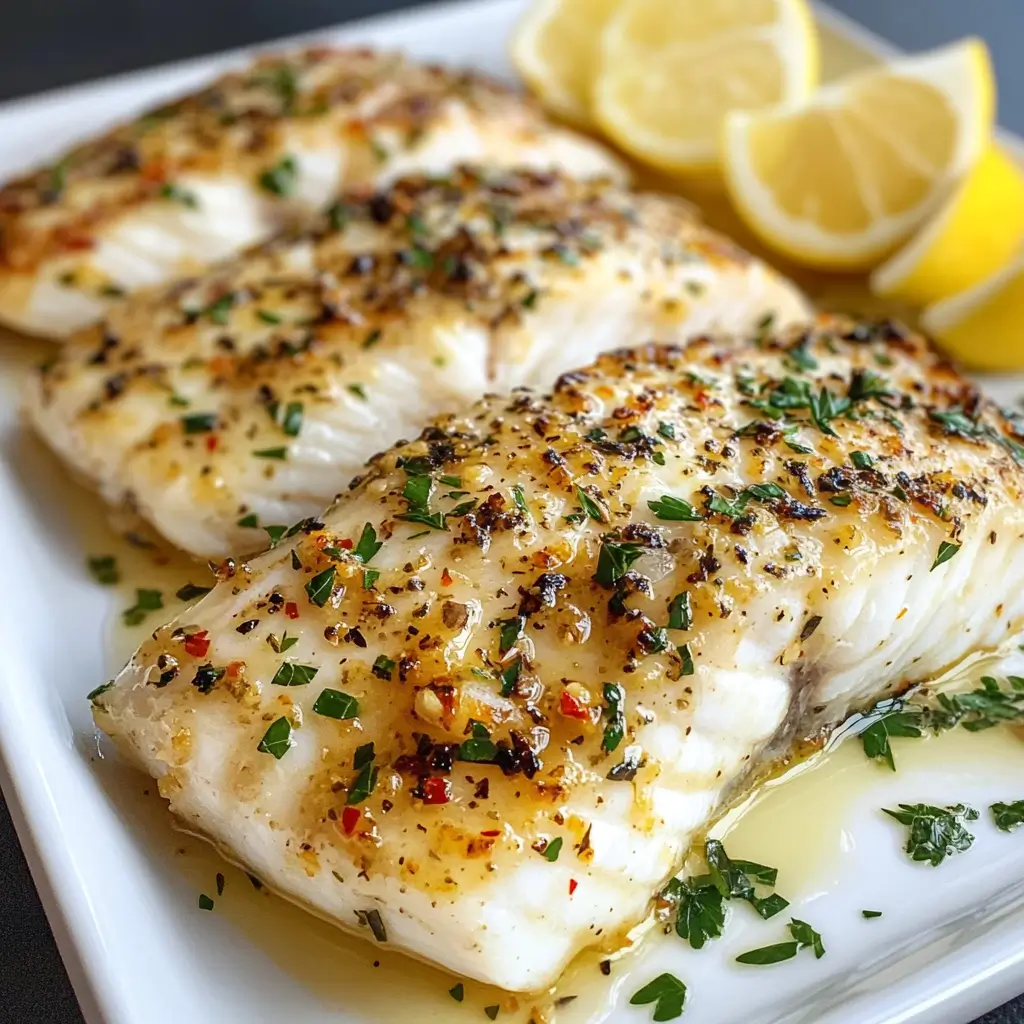When it comes to preparing seafood, one question often arises: “Should you soak rockfish before cooking?” This technique has long been debated among chefs and home cooks, as soaking can enhance flavor, improve texture, and eliminate unpleasant odors. So, should you soak rockfish before cooking if it’s fresh, frozen, or pre-salted? Many believe it’s the key to a better dish, while others prefer alternative preparation methods. Understanding the answer to “Should you soak rockfish before cooking?” can help you make an informed decision in the kitchen. Whether you want to improve taste or fix a strong odor, knowing if you should soak rockfish before cooking is essential. In this guide, we’ll explore when soaking is beneficial and when you can skip it. By the end, you’ll know exactly why and when you should soak rockfish before cooking.
Soaking fish is a step that can enhance flavor, improve texture, and eliminate unwanted odors, but it is not always necessary. This comprehensive guide will explore the pros and cons of soaking rockfish, the best soaking techniques, and alternative preparation methods to help you make an informed decision for your next dish. By the end of this guide, you’ll have the expertise to prepare rockfish perfectly, whether or not you choose to soak it.
Understanding Rockfish
What is Rockfish?
Rockfish is a type of marine fish belonging to the Sebastes genus. Found primarily in the Pacific Ocean, these fish live near rocky reefs and underwater structures, which is how they earned their name. Known for their firm texture and subtle sweetness, rockfish is a popular seafood option in various cuisines around the world.
One important thing to note is that rockfish is often mislabeled as “Pacific snapper” or “red snapper” in markets, though it is not a true snapper species. Verifying the exact type with your fishmonger ensures you’re getting the fish you want.
Popular Types of Rockfish
There are over 100 species of rockfish, but a few stand out in the culinary world:
- Black Rockfish: Known for its robust flavor and firm texture, black rockfish is excellent for frying or grilling.
- Vermilion Rockfish: With its vibrant red color and meaty fillets, vermilion rockfish is ideal for steaming and baking.
- Yelloweye Rockfish: Prized for its buttery texture and delicate flavor, this variety is perfect for gourmet dishes.
- Pacific Rockfish: The most widely available and versatile species, Pacific rockfish works well in tacos, soups, or pan-searing.
Nutritional Benefits of Rockfish
Rockfish is not only delicious but also nutritious. It is packed with essential nutrients that support overall health:
- Protein: High in lean protein, rockfish aids in muscle growth and repair.
- Omega-3 Fatty Acids: Promotes heart health, reduces inflammation, and supports cognitive function.
- Vitamins: Rich in vitamin B12 for energy production and vitamin D for bone health.
- Minerals: Provides selenium and phosphorus, which are crucial for immune function and bone development.
Low in calories and fat, rockfish is an excellent choice for those pursuing a healthy lifestyle or following weight-management plans.
Why Soak Rockfish Before Cooking?
Soaking fish is a traditional preparation step that serves various purposes. Here’s why you might want to soak rockfish:
1. Reducing Salt and Preservatives
Pre-packaged or frozen rockfish is often treated with salt or preservatives to extend its shelf life. Soaking the fish in water or milk can help draw out excess salt and chemicals, ensuring a cleaner and more natural flavor.
2. Neutralizing Odors
Fresh rockfish should have a mild, oceanic scent. However, if it develops a stronger “fishy” odor during storage, soaking it in milk, lemon water, or vinegar can neutralize the smell, making the fish more appealing to cook and eat.
3. Improving Texture
Frozen fish can lose some of its natural moisture during storage. Soaking helps rehydrate the flesh, restoring its tender, flaky texture.
4. Preparing the Fish for Marinades
Soaking opens up the fish’s pores, allowing it to absorb marinades and seasonings more effectively. This step can enhance flavor and ensure even seasoning throughout the fillet.
Drawbacks of Soaking Rockfish
While soaking has its advantages, it’s not always the best choice. Here are some potential downsides:
1. Loss of Nutrients
Soaking can cause water-soluble nutrients, such as B vitamins, to leach into the soaking liquid. Although this loss is generally minimal during short soaks, it’s something to consider if you want to retain the fish’s full nutritional value.
2. Over-Soaking Risks
Leaving rockfish in liquid for too long can make it overly soft or mushy. This is especially true when using acidic solutions like lemon juice or vinegar, which can denature the proteins in the fish.
3. Additional Preparation Time
Soaking adds an extra step to your cooking process, which may not be ideal if you’re short on time or prefer simpler preparation methods.
Best Practices for Soaking Rockfish
If you decide to soak your rockfish, following these best practices will help you achieve optimal results:
Choosing the Right Soaking Liquid
The type of liquid you choose depends on the outcome you’re looking for:
- Water: A simple choice for removing salt and impurities.
- Milk: Effective for neutralizing odors and enhancing the fish’s natural sweetness.
- Brine: A mild saltwater solution can subtly season the fish and improve its texture.
- Lemon Water: Ideal for reducing odors while adding a hint of citrus flavor.
Ideal Soaking Times
- Fresh Rockfish: 10–15 minutes is usually sufficient to remove surface impurities or mild odors.
- Frozen Rockfish: 20–30 minutes helps rehydrate the flesh and balance salt levels.
- Milk Soak: Limit to 30 minutes to avoid over-softening the fish.
Step-by-Step Soaking Process
- Rinse the Fish: Begin by rinsing the fish under cold water to remove any surface debris.
- Prepare the Liquid: Pour your chosen soaking liquid into a shallow dish or bowl.
- Submerge the Fish: Place the fish in the dish, ensuring it is fully covered.
- Refrigerate: Keep the fish refrigerated during the soaking process to maintain freshness.
- Pat Dry: After soaking, pat the fish dry with paper towels before seasoning or cooking.
Alternatives to Soaking Rockfish
If soaking doesn’t suit your preferences or time constraints, here are some alternative preparation methods:
1. Rinsing
For fresh rockfish, a quick rinse under cold water is a simple and effective way to remove surface impurities or mild odors. This easy step ensures the fish is clean and ready for cooking without requiring any extensive preparation. After rinsing, gently pat the fish dry with a clean paper towel to improve seasoning adhesion and achieve better results during cooking.
2. Marinating
Marinating is an excellent way to tenderize rockfish while infusing it with additional flavor. A simple marinade made with olive oil, citrus juice (such as lemon or lime), minced garlic, and fresh herbs like dill, parsley, or thyme pairs beautifully with the fish’s mild taste. For best results, allow the rockfish to marinate for 15–30 minutes. This short marinating time ensures the flavors penetrate the fish without overpowering it or breaking down its texture. After marinating, cook the fish using your preferred method, such as grilling, baking, or pan-searing, to enjoy a flavorful and tender dish.
3. Dry Brining
Dry brining is a simple and effective method to enhance the flavor and texture of rockfish without the need for liquid soaking. To dry brine, coat the fish evenly with a mixture of salt, sugar, and your choice of spices. Place the fish on a plate or in a shallow dish and let it rest in the refrigerator for 30–60 minutes. During this time, the salt draws out moisture and then reabsorbs it, locking in flavor and firming up the texture of the fish. Once brined, rinse off any excess seasoning, pat the fish dry, and proceed with your preferred cooking method.
Cooking Methods for Rockfish
Once your rockfish is prepared, choosing the right cooking method is crucial for bringing out its best qualities. Here are some popular techniques:
1. Grilling
Grilling is a great way to add a smoky flavor and a crispy exterior to rockfish. Start by brushing the fish with olive oil to prevent sticking, then season it with salt, pepper, or your favorite spices. Preheat the grill to medium heat, and place the fish directly on the grill grates or use a fish basket for easier handling. Grill the fish for 3–4 minutes per side, or until it is cooked through and flakes easily with a fork. This method enhances the fish’s natural flavors and creates a delicious charred finish.
2. Pan-Searing
Pan-searing is a quick and effective method that creates a delicious golden-brown crust on the outside while keeping the interior of the fish moist and tender. To pan-sear rockfish, heat a small amount of oil in a skillet over medium-high heat. Season the fish with your choice of spices or a simple mix of salt and pepper. Place the fillets in the hot skillet and cook for 2–3 minutes on each side, or until the fish is golden and flakes easily with a fork. This method enhances the natural flavor and texture of the fish while adding a satisfying crispness.
3. Baking
Baking is a convenient, hands-off cooking method that works especially well for larger fillets of rockfish. Begin by preheating your oven to 375°F (190°C). Season the fish with your favorite spices, herbs, or a simple combination of salt, pepper, and olive oil. Place the fillets on a baking sheet or in a dish lined with parchment paper, and bake for 12–15 minutes, or until the fish flakes easily with a fork. This method is simple and ensures the fish remains moist and flavorful.
4. Steaming
Steaming is an excellent cooking method that preserves the fish’s natural flavors and nutrients. To enhance the aroma and taste, consider adding lemon slices and fresh herbs such as dill, parsley, or thyme to the steaming water. The gentle steam infuses the fish with subtle flavors while keeping it moist and tender, making it a healthy and delicious option.
5. Frying
For a crispy and indulgent preparation, coat rockfish in breadcrumbs or a light batter and fry it until it turns golden brown. This method creates a deliciously crunchy exterior while keeping the fish tender and flaky inside. Pair it with tartar sauce for a classic touch or add a squeeze of fresh lemon juice to enhance the flavor and provide a bright, zesty finish.
Frequently Asked Questions
How Long Should I Soak Rockfish?
Soak fresh rockfish for 10–15 minutes and frozen rockfish for 20–30 minutes to remove any unwanted odors or impurities. Be careful not to soak the fish for longer than 30 minutes, as this can alter its texture, making it less firm and potentially affecting its quality. Proper soaking times ensure the fish remains tender and flavorful without compromising its natural characteristics.
Is It Necessary to Soak Fresh Rockfish?
Not always. Fresh rockfish usually doesn’t need soaking unless it has a strong odor or visible impurities. In most cases, simply rinsing it under cold water and patting it dry is sufficient to prepare it for cooking. Soaking is generally reserved for situations where the fish needs odor neutralization, salt reduction, or slight flavor enhancement.
What’s the Best Liquid for Soaking Rockfish?
Milk is a popular choice for neutralizing strong odors in fish, leaving it with a fresher and milder aroma. Water is effective for removing excess salt, making it ideal for fish that has been cured or brined. Lemon water, on the other hand, not only helps to eliminate unwanted odors but also imparts a subtle citrus flavor, enhancing the overall taste of the fish. Each method can be tailored to suit the specific needs of the dish you’re preparing.
Does Soaking Improve Flavor?
Yes, soaking fish can enhance its flavor by removing unwanted tastes and odors, such as excess saltiness or fishiness. Additionally, soaking can help improve the texture, making it more tender and pleasant to cook and eat. Common soaking methods include using milk, lemon water, or lightly salted water, depending on the desired result and the type of fish being prepared.
Can I Skip Soaking Frozen Rockfish?
Yes, if the fish isn’t overly salty or has no strong odor, simply rinsing it under cold water and patting it dry with a clean paper towel should be sufficient. This process helps remove any surface impurities and ensures the fish is ready for cooking without altering its natural flavor.
Conclusion
Should you soak rockfish before cooking? The answer depends on the fish’s condition and your personal preferences. Soaking can enhance flavor, reduce odors, and improve texture, making it a valuable step for frozen or pre-packaged fish. However, for fresh rockfish, simpler preparation methods like rinsing or marinating may suffice.
By understanding the benefits, drawbacks, and alternatives to soaking, you can confidently prepare rockfish to suit any recipe. Whether you grill, bake, steam, or fry it, rockfish will undoubtedly shine as the centerpiece of your meal.
Related article:
Does Rockfish Taste Like Halibut?
15 Mouthwatering Rockfish Recipes to Revolutionize Your Dinner Table
Is Branzino a Good Fish to Eat? A Detailed Guide
Do You Eat the Skin on Branzino?
The Ultimate Branzino Fillet Recipe: A Step-by-Step Guide to Perfect Results



